Yorktown and the Peninsular Campaign
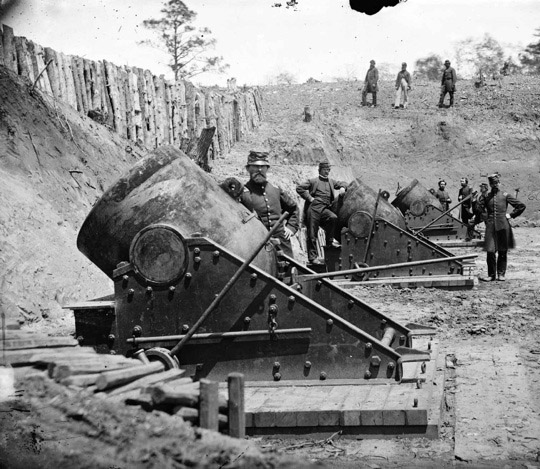
This illustration from Harpers Weekly of August 8, 1863. The caption stated "The Battle of Gettysburg - Longstreet's Attack on our Left Center - Blue Ridge in the Distance - From a Drawing by Mr. A. R. Waud.-
General McClellan decided to use the superior mobility of the Union Army to move quickly and land behind Richmond on the Peninsular. He succeeded in moving the Union army by sea quickly there. But instead of moving rapidly on Richmond he move slowly and gave the Confederates enough time to reinforce their forces and block him.
General McClellan developed a plan to advance on Richmond via the Peninsular. The plan called for the movement of the Army of the Potomac by sea to Fort Monroe at Hampton Road, Virginia. Once there, it called for a rapid movement up the peninsular before the Confederates could reinforce Richmond. President Lincoln reluctantly approved the plan, with the stipulation that enough troops be left behind to defend Washington and keep the Confederate army away from Northern Virginia. On April 1, McClellan embarked for Fort Monroe. After being told that McClellan had not left as many men behind as he was suppose to, Lincoln ordered the army of General McDowell be detached from McClellan and told to continue to operate in the Manassas area.
McDowell’s force contained 35,000. McClellan was furious by this action, and felt it crippled him. It may have, but only psychologically. McClellan had 85,000 troops in his army, facing a Confederate force of the time that numbered less than 15,000. McClellan was convinced that he faced an army larger than his own. Thus, when his forces began moving up the Peninsula, and found the fortress at Yorktown a more formidable obstacle than expected, he decided to lay siege to it. It took one month to get the siege guns in place. During that time the Confederate army had plenty of time to reinforce the lines around Richmond. On May 3rd, as McClellan was about to begin in bombardment, the Confederates withdrew. On May 4th, McClellan's army occupied the now empty Yorktown. Advance troops headed up to Williamsburg, where they were met by a Confederate force. The Union army lost 2,200 men and the Confederates 1,700 in a short fight.
| Early's Account of Yorktown | Early Account of Williamsburg |
| Report to Stanton | Report to Winfield Scott |
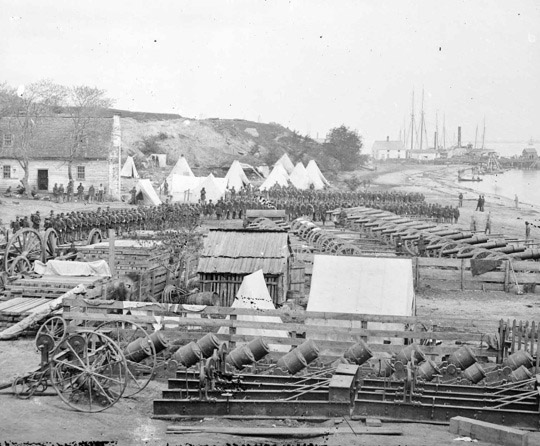
Yorktown, Va. Federal Artillery park: photographed by Scott Gibson on May 1862

Drawings of a Cavalry Charge Yorktown Pike. This illustration from Harpers Weekly May 17, 1862 of the Battle of of the Battle of Yorktown.
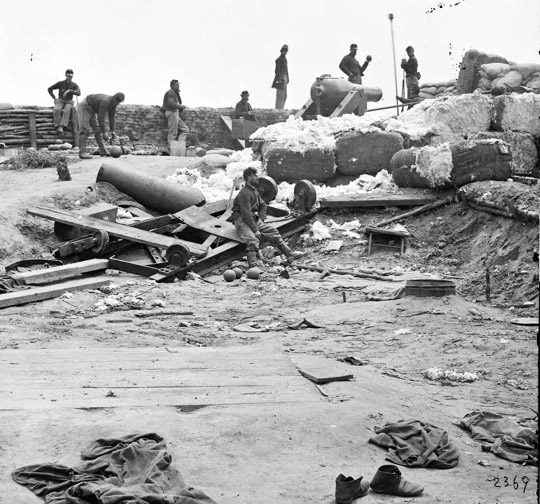
Yorktown, Va. Confederate fortifications reinforced with bales of cotton photographed by Scott Gibson on May 1862
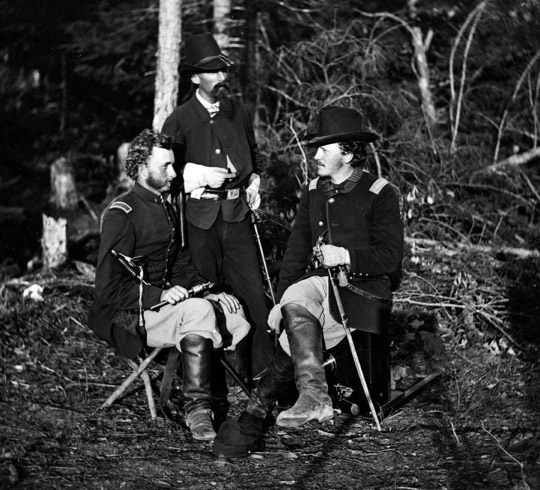
The Peninsula, Va. Lts. George A. Custer, Nicolas Bowen, and William G. Jones:

Yorktown, Va., vicinity. Topographical engineers, Camp Winfield Scott: photographed by Scott Gibson on May 2, 1862

Cumberland Landing, Va. Group of "contrabands" at Foller's house: photographed by Scott Gibson on May 14 1862
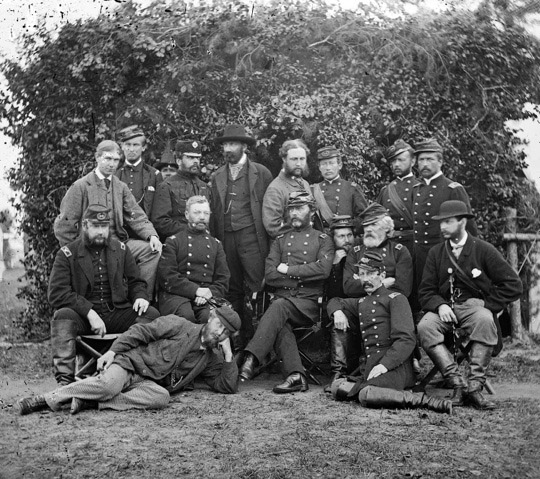
Yorktown, Va., vicinity. Gen. Randolph B. Marcy, officers, and friends at Camp Winfield Scott: photographed by Scott Gibson on May 2, 1862
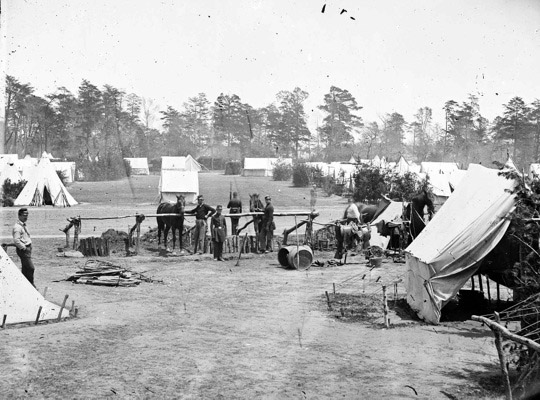
Yorktown, Va., vicinity. Headquarters of Gen. George B. McClellan, Camp Winfield Scott: photographed by Scott Gibson on May 2, 1862
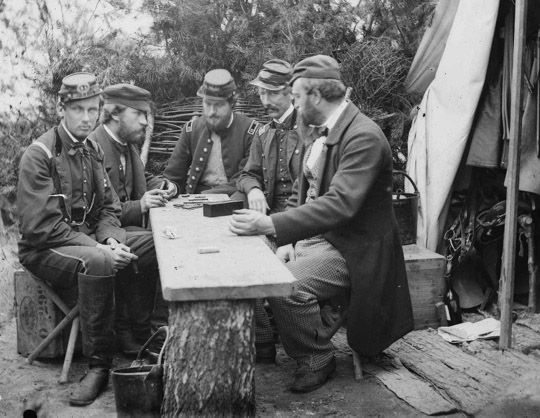
Yorktown, Va., vicinity. Duc de Chartres, Comte de Paris, Prince de Joinville, and friends playing dominoes at a mess table, Camp Winfield Scott: photographed by Scott Gibson on May 2, 1862

Cumberland Landing, Va. Gens. Andrew A. Humphrey's, Henry W. Slocum, William B. Franklin, William F. Barry, and John Newton, with friends: photographed by Scott Gibson on May 1862

Yorktown, Va., vicinity. 13-in. seacoast mortars of Federal Battery No. 4 with officers of 1st Connecticut Heavy Artillery: photographed by Scott Gibson on May 1862
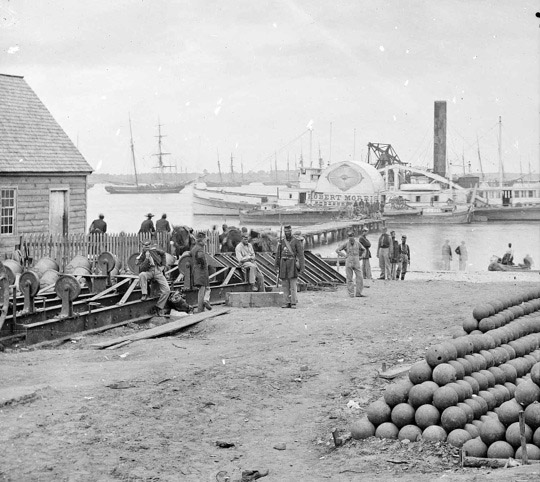
Yorktown, Va. Embarkation for White House Landing, Va.: photographed by Scott Gibson on May 1862

Union Supply Ships at White House Landing 1862
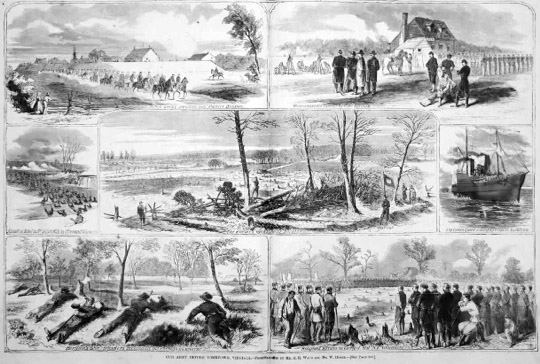
This illustration from Harpers Weekly May 3, 1862 of the Battle of of the Battle of Yorktown.
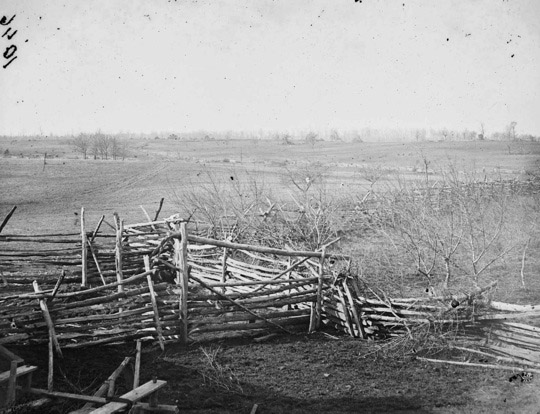
A View of the Battlefield. This photo was taken a year after the battle.
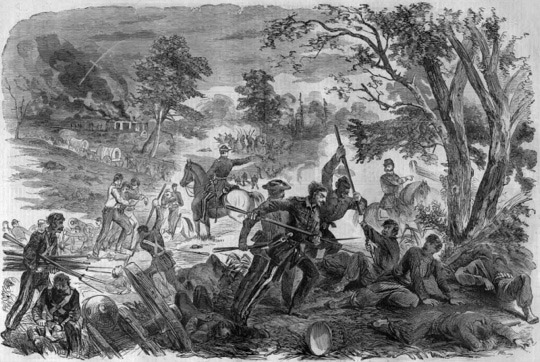
This is a Harpers Weekly Drawing that shows the confederate soldiers killing the union wounded on the battlefield

This is a color drawing of Colonel Burnside's Brigade , First and Second Rhode Island, and Seventy-First New York Regiments with their artillery attacking the rebels at Bull Run. The drawing was published by H.H. Lloyd and Cos

 >
>